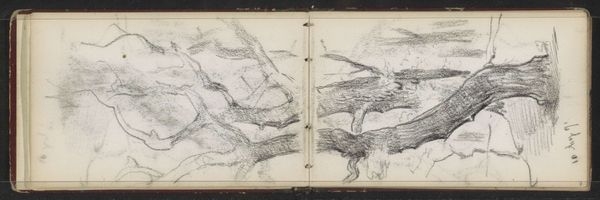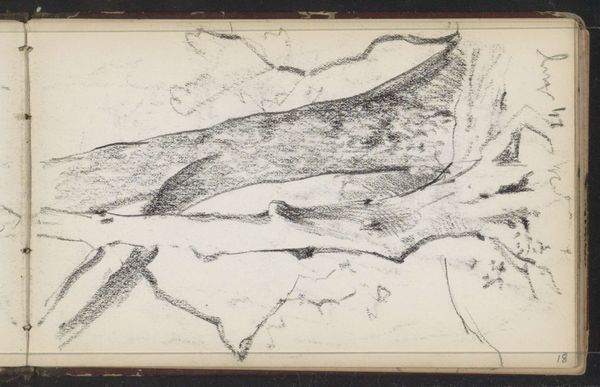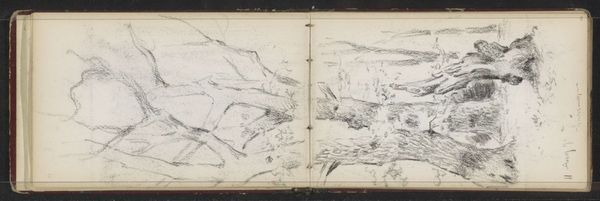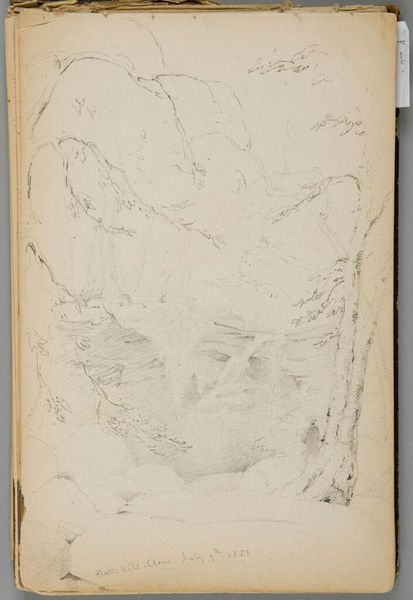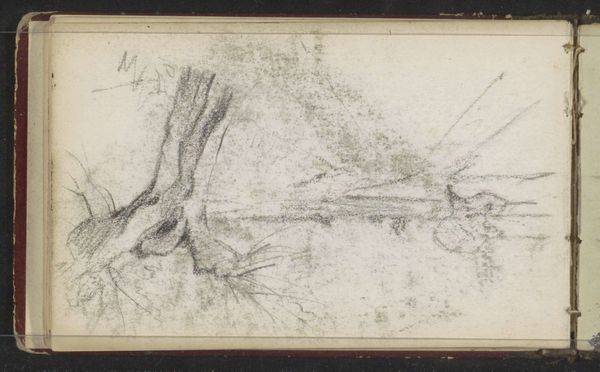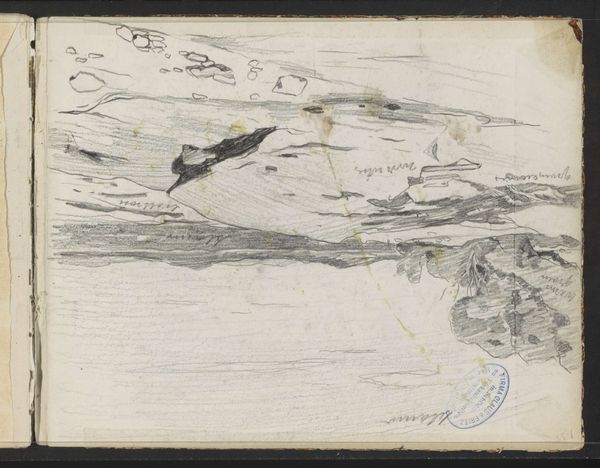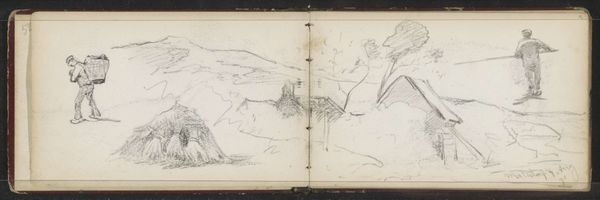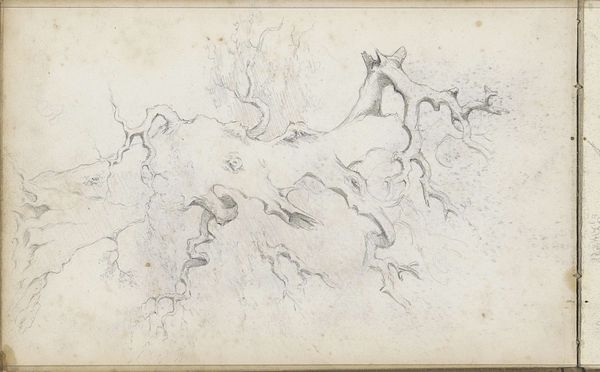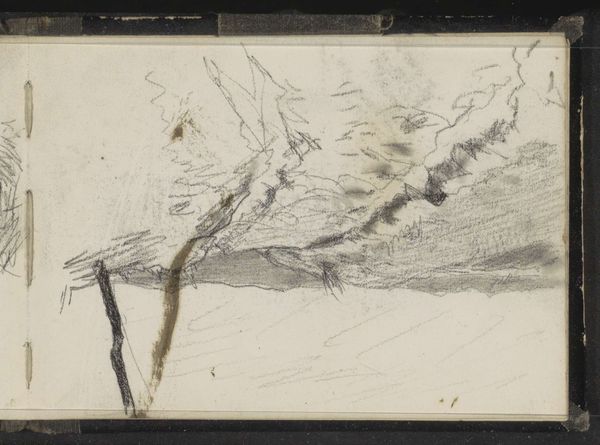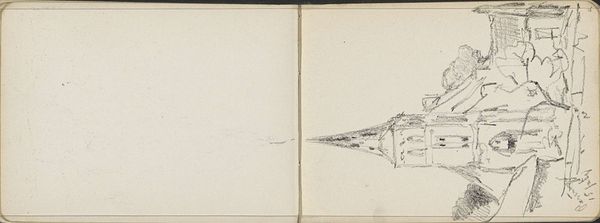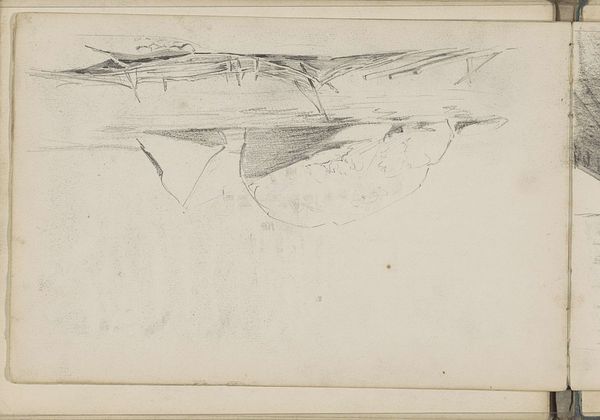
Dimensions: height 101 mm, width 157 mm
Copyright: Rijks Museum: Open Domain
Curator: We’re looking at “Bos” by Willem Cornelis Rip, likely created between 1891 and 1898. It's a graphite and pen sketch on paper. What strikes you first about it? Editor: The immediate sense I get is one of grounded immobility, a stillness that feels almost…burdened. The dense hatching of the graphite gives it a weight, doesn’t it? And there's a stark contrast in tonal range. Curator: Indeed, the artist's method really shapes the texture. Consider how the graphite strokes build both depth and form across this extended panoramic view. See how Rip orchestrates our view through the strategic use of light and shadow? He coaxes depth with an impressive economy of line. Editor: But it's not just a formal exercise, is it? Looking closer, the drawing's horizontality, split across the double page of a sketchbook, implies a sprawling landscape—the 'Bos' of the title is ‘woodland’ in Dutch, but a woodland shaped and possibly threatened by human activity, and the clear dividing line might reflect the deep-seated cultural separation between the constructed order and wilder nature. The materiality also suggests someone sketching out in the fields. Curator: I see your point about the division adding tension and your insight on cultural separation, although it might simply have been conceived to make it easier for an artist to reference it in their later works. However, that horizontality, those layered strokes—they lend a visual rhythm, don't they? It pushes back at your stillness a bit; that landscape breathes through its details and tonality. Editor: It does offer nuances. Think about how that deep horizontality—constrained by the confines of the sketchbook—echoes something profound about confinement versus liberation, an issue that resonates today within political landscapes across the globe, including issues regarding the environment and indigenous rights, especially the rights for those who are systematically dispossessed by economic development. Curator: The interplay is thought-provoking. Even at the formal level, the contrast between a rough sketch and potential artistic intention raises compelling questions about the art object's evolution. The lack of clean line in some ways feels more intentional. Editor: Yes, an intent deeply embedded in socio-historical experience. The drawing does capture both that essence.
Comments
No comments
Be the first to comment and join the conversation on the ultimate creative platform.
